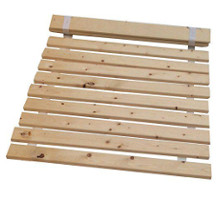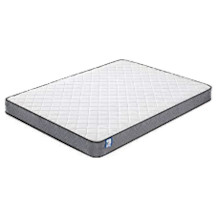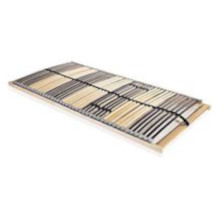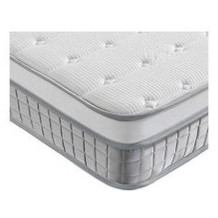Mattress topper purchasing advice: how to choose the right product
- What You Need to Know
- A mattress topper is a comfort topper that helps you optimise your current sleeping surface.
- Toppers make a hard mattress softer and a low mattress higher, bridge the visitor’s gap and are gentle on the back thanks to pressure relief.
- In addition to the common cold, visco and memory foam mattress toppers, there are also mattress toppers made of latex and natural materials.
- While length and width should be matched to the mattress dimensions, you choose the height according to how soft you want to sleep.
- Ideally, the cover should be removable or washable, suitable for allergy sufferers and breathable.
Not to be topped: The extra portion of luxury for your mattress
Restful sleep is essential for our physical and mental well-being. Accordingly, it is not surprising that a lack of sleep can lead to devastating health problems. Often it is not an external factor such as stress that is the cause, but simply the sleeping surface. If you are not one hundred percent satisfied with the sleeping comfort of your mattress, a mattress topper can help. The idea originated in Scandinavia, where the luxurious topper has long been used on box-spring beds. But a topper also has many advantages for conventional bed systems.
Would you like a little more comfort? The possible uses
A topper is used in a wide variety of circumstances, whether it is to enhance a hard mattress, to elevate a bed system, to bridge a visitor’s gap, i.e. the gap between two mattresses, or to prevent back pain.
You can use a topper to soften a mattress that is too hard, but it doesn’t work the other way round: if the mattress is too soft, no topper will help. In addition, a mattress topper is ideal if you want to make it easier for yourself to get up by raising your bed. Another practical use is to bridge the annoying visitor’s gap that occurs between two single mattresses in a double bed. With a topper that stretches across the entire bed, you will feel as if you are sleeping on one big mattress without having to give up your respective preferred mattress types.
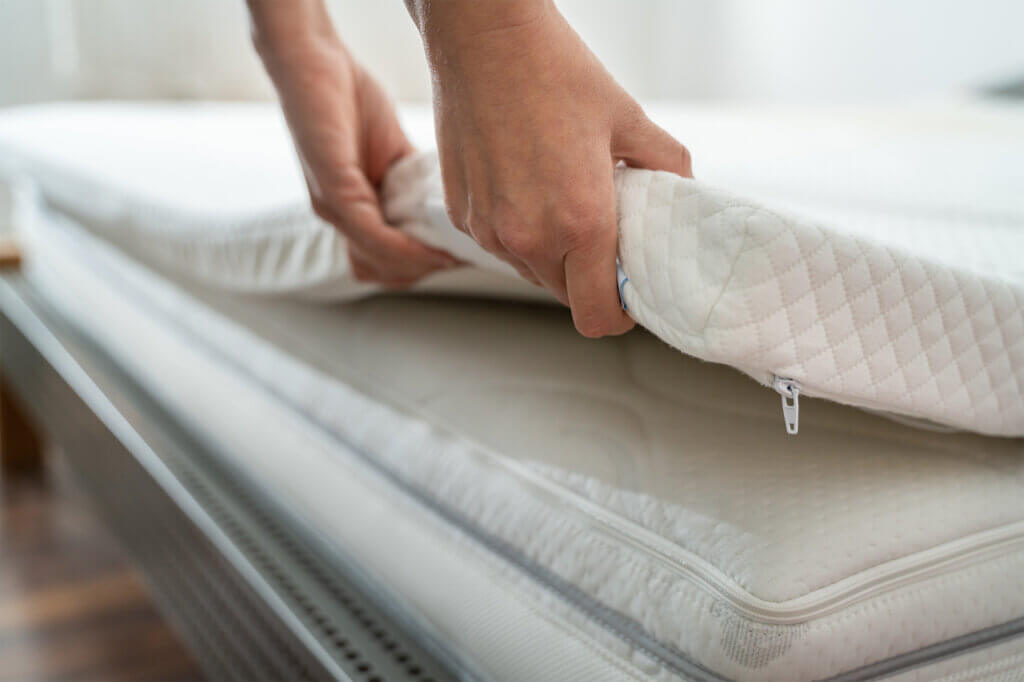
If you suffer from back pain, the mattress is often the trigger. A topper can alleviate the discomfort because it reacts to pressure and provides targeted support for your back. Your back thus adopts an ergonomically correct posture and is relieved in this way, allowing your muscles to relax during sleep.
Forbidden territory: cold foam mattresses
Mattress toppers are not suitable for use with cold foam mattresses. This is because sufficient air circulation cannot take place in combination with a topper.
Heavenly night or nightmare? The pros and cons of a mattress topper
Unlike a protector, a topper is not just a mattress protector, but a four to twelve centimetre high overlay to improve the lying characteristics. Unlike a protector, you do not place the topper on the slatted frame, but directly on the mattress. It adapts to your body contours, optimises pressure relief, increases point elasticity and thus ensures a comfortable night’s sleep. The main task of the comfort toppers is therefore to reinforce the positive properties of the base and to adapt the lying sensation to your individual needs, so that you lie ergonomically correct and sleep as if on cloud nine.
Ideally, the topper also optimises bed hygiene by absorbing any perspiration. After all, we lose up to half a litre of fluid at night, which inevitably ends up directly in the mattress. The sleeping climate can also be regulated with the help of a topper: So if you sweat or freeze, choose a version that counteracts these problems. Another plus is that the topper reduces wear and tear on the mattress from above, thus extending its life.
Pro points
- Increased lying comfort
- Improves the sleeping climate
- Even pressure distribution
- Increased durability of the mattress
- Compensation for mattresses that are too hard
- Bridging the visitor’s gap
Drawbacks
- Unsuitable for cold foam mattresses
The core of the topper: the material question
All mattress toppers are constructed according to a similar scheme. The basis is the core, which consists of different fillings, each with different properties. In addition to your mattress, your sleeping habits are the main factor in choosing the right topper. But which material is right for you? That depends on whether you sweat or freeze at night, whether you prefer to lie hard or soft and whether you want to support your back:
- You sweat at night: gel or cold foam
- You freeze at night: Visco foam
- You like to lie hard: cold foam
- You like to lie soft: Visco foam
- You like to lie neither hard nor soft: gel foam
- You have back pain: gel or Visco foam
Mattress toppers made of cold foam, visco foam and gel foam are most commonly used. However, latex toppers, mixed forms and versions with fillings made of natural materials are also used from time to time.
Cold foam topper
Toppers made of cold foam are the cheapest and most common types. They belong to the group of firm sleeping surfaces. That is why they are ideal for people with a high body weight or generally for all those who like to lie harder. Cold foam toppers react area-elastically to pressure. They therefore have a high restoring capacity. Whenever you change your sleeping position, the cold foam immediately returns to its original shape, which creates a springy lying feeling. The material is therefore especially recommended for sleepers who move around a lot at night.
Cold foam is temperature regulating. Thanks to its open-pored nature, it can actively breathe, so trapped heat is avoided. It absorbs body heat and moisture and transfers them. Cold foam toppers thus ensure a pleasant sleeping climate and are suitable for anyone who prefers to sleep in a cool place or tends to sweat at night. Allergy sufferers are also well advised to use these toppers, as they are comparatively easy to care for and hardly susceptible to mite infestation.
Comfort foam topper
Comfort foam is a sub-category of cold foam. The inexpensive toppers made of PU foam are usually somewhat harder than Visco and memory foam toppers, but softer than cold foam models.
Visco topper
Viscoelastic foam, also known as viscofoam or “memory foam”, softens with body heat and conforms to contours accordingly. Sleepers have the feeling of sinking into it. Thus, Visco toppers provide pinpoint pressure relief, which is great for anyone who is plagued by back pain. They are ideal for people who like to lie softly. However, they are not suitable for restless sleepers because the foam needs a certain amount of time to return to its original shape after each change of position due to the “memory effect”.
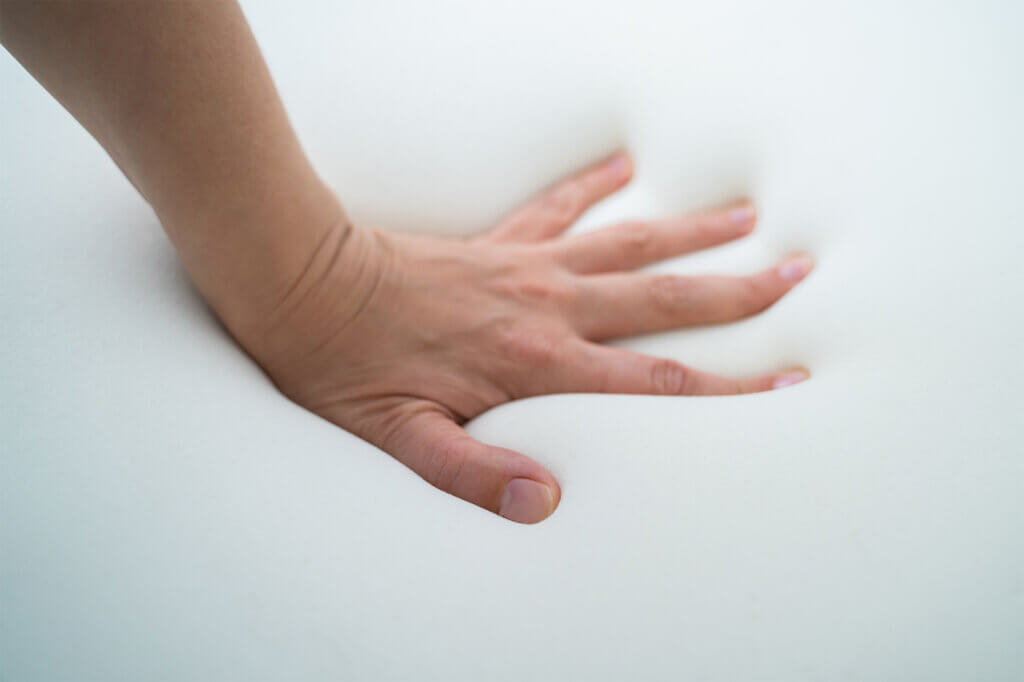
Since the material can store heat well, toppers made of Visco foam are recommended for people who freeze easily at night and prefer to sleep comfortably warm. Due to its sound-absorbing properties, it is completely noise-free. Moreover, thanks to its low susceptibility to mites, the foam is not only extremely easy to care for, but also a good choice for allergy sufferers.
Memory foam mattress topper
Memory foam mattress toppers combine the positive properties of cold and visco foam. Thanks to their point-elastic effect, they adapt to your body contours. In this way, they relieve pressure on the spine, which is particularly beneficial for people with back pain. Their high resilience means that they return to their original position immediately after pressure is applied. This makes them suitable for restless sleepers who change position frequently. They also prevent the formation of cavities, which in turn makes the mattress last longer. So despite their elasticity, memory foam mattress toppers are extremely dimensionally stable.
Gel foam is also particularly breathable and open-pored, which ensures good air circulation. Unlike their visco foam counterparts, memory foam mattress toppers do not store heat from the environment; heat build-up is therefore ruled out. Their cooling effect makes them ideal for those who sweat heavily at night and prefer to sleep in a cold environment. Toppers made of memory foam are also recommended for allergy sufferers.
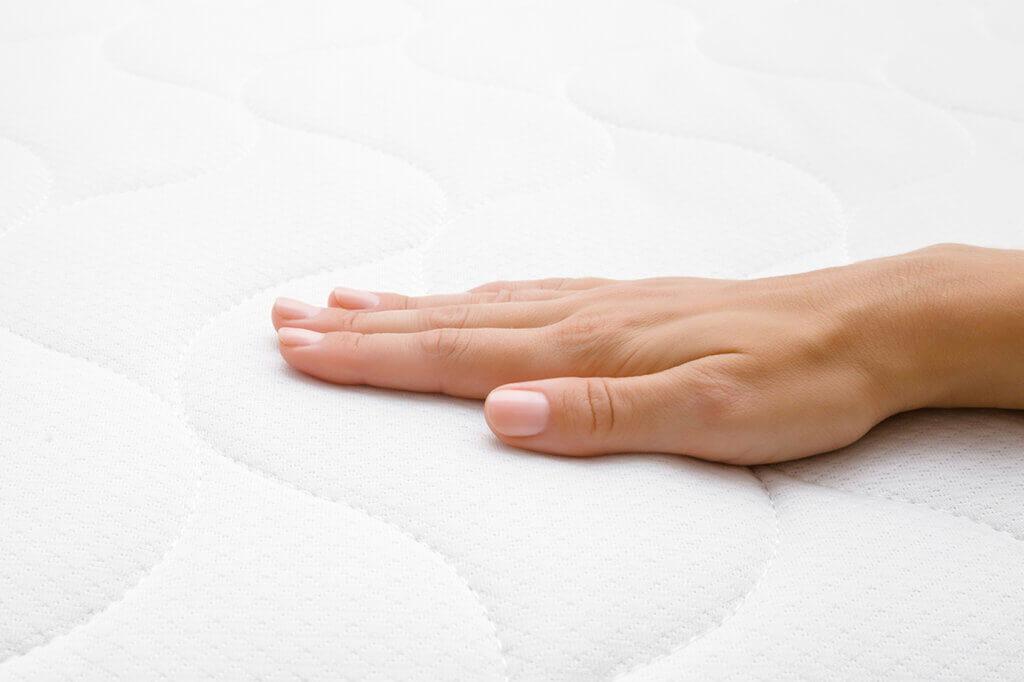
Latex topper
Latex has a high point elasticity, i.e. it adapts optimally to the individual parts of the body, and is also pleasantly soft. The dimensionally stable material returns to its original position immediately after pressure is relieved. Latex overlays therefore have a slightly springy effect. Despite their flexibility, they have a high support capacity.
Compared to cold foam versions, mattress toppers made of latex are less breathable, but still wick away moisture well and regulate the sleeping climate in this way. However, they are unsuitable for people who perspire heavily. Toppers made of natural latex are ideal for allergy sufferers. Visco-latex toppers are also supposed to combine the positive properties of visco foam and latex. They relieve pressure, are breathable and adaptable.
Natural fillings
In addition to artificial cores, there are also fillings made of natural raw materials such as cotton, wool, silk and down. However, toppers made of natural fibres have only low elasticity and a comparatively short life span.
What matters when buying
Besides the filling material, other factors are decisive for the purchase. Depending on your individual sleeping needs, a different size or core height as well as a different cover may be suitable for you.
The dimensions: standard sizes and the ideal core height
The size of the mattress topper should always match the size of your mattress. If you have a large double bed, you can decide whether you prefer two toppers or one together. If you have different needs, it is a good idea to use different toppers. If necessary, you can also equip only one side of the bed with a topper.
The following sizes are available:
- 80 x 200 centimetres: for small single beds, each 80 centimetres wide or a 160 centimetre wide mattress
- 90 x 200 centimetres: for small single beds, each 90 centimetres wide or a 180 centimetre wide mattress
- 100 x 200 centimetres: for small single beds, each 1000 centimetres wide or a 200 centimetre wide mattress
- 120 x 200 centimetres: for a large single bed
- 140 x 200 centimetres: for a large single bed or a small double bed
- 160 x 200 centimetres: for a medium-sized double bed
- 180 x 200 centimetres: for a large double bed
- 200 x 200 centimetres: for an XXL double or family bed
In addition to the standard sizes, there are special sizes such as 80 x 190, 90 x 190, 90 x 220, 100 x 210, 100 x 220 or 150 x 200 centimetres. However, not every manufacturer sells these.
For a mattress topper, it is not only the width and length that are important, but also the height. The most important factor here is the core height. On average, this is between four and eight centimetres, rarely up to twelve centimetres. Do not choose a bedding that is too thin; five or six centimetres is usually sufficient. The rule here is: the higher, the softer. If you prefer a particularly soft sleeping comfort, you should choose a higher version. However, more than twelve centimetres is usually “over the top”.
The volume weight
The density (RG) should be at least 30, but ideally 45 or 50 kilograms per cubic metre. Too low a volume weight can quickly cause the topper to lose comfort. In this case, cupping will occur more quickly. A topper with RG50, on the other hand, guarantees a long life.
The cover: removable, suitable for allergy sufferers, breathable
The cover of the mattress topper is made of either cotton, virgin wool, microfibre or Tencel or Lyocell. These materials ensure a pleasant sleeping climate. Stitched climate fibre is particularly breathable. An integrated climate fleece ensures active moisture and temperature regulation and prevents heat build-up, which often leads to sweating. Nubs on the underside and four rubber bands at the corners of the cover guarantee a secure hold so that it does not slip unintentionally.
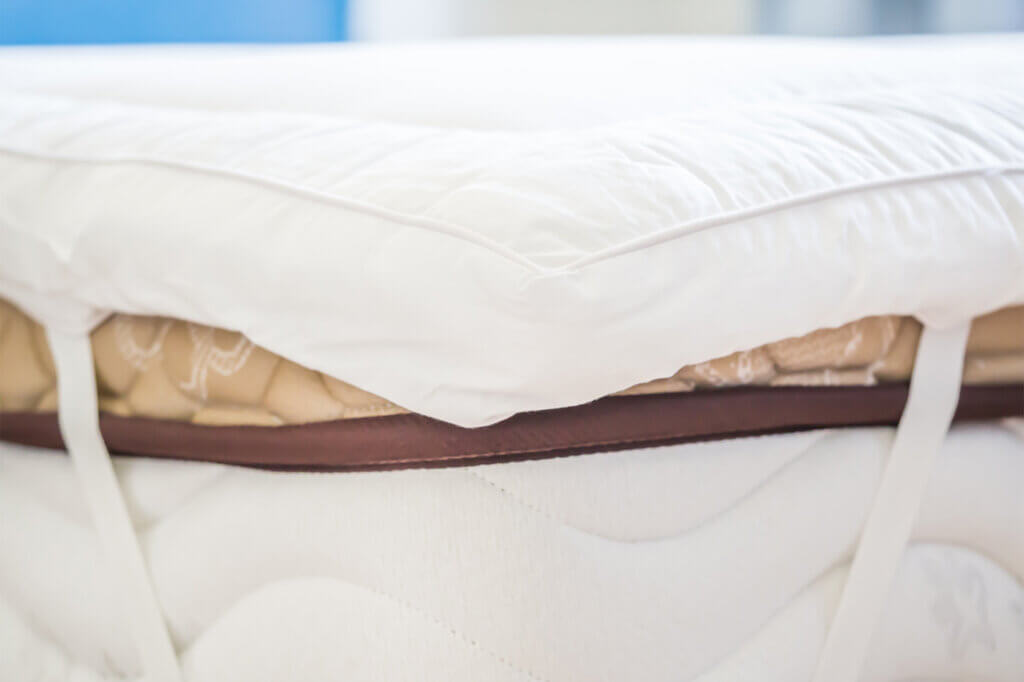
Ideally, the cover is equipped with a zip so that it can be easily removed and cleaned. Most models are washable at 40 or 60, sometimes even 90 degrees Celsius. At these temperatures, bacteria and dust mites don’t stand a chance, which should not only please allergy sufferers, but basically anyone who values hygiene. The OEKO-TEX Standard 100 also certifies tested material quality.
Notes on care and changing
To maintain a high standard of sleeping hygiene, you should clean the topper every month. So put the cover in the washing machine regularly. You will usually find instructions on the label. However, the dryer is taboo. In any case, wait until the cover is completely dry and only then put it back over the core. Otherwise mould may form. While the cover is doing its rounds in the machine, place the topper core outside in the sun or in front of the heater to air or disinfect it. If necessary, you can remove dirt from the core with a steam cleaner.
Just like your mattress, you should also replace the topper regularly. Basically, it is recommended to change the topper after about six to eight years for hygienic reasons. At the latest when a lying depression or an unpleasant smell has formed, it is time for a new topper. Depending on the quality, it may be necessary to replace the topper even earlier, as lower-quality models lose their comfort more quickly. So it is definitely worth investing in a good topper.
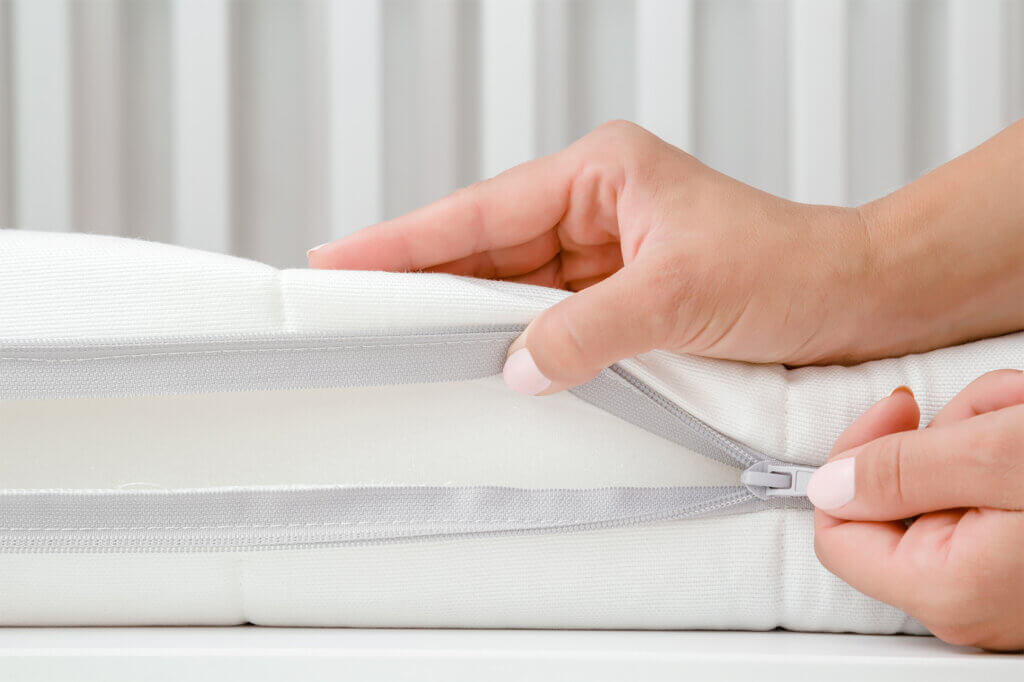
Fig. 1-2: © Andrey Popov / stock.adobe.com | Fig. 3: © fotoduets / stock.adobe.com | Fig. 4: © penkanya / stock.adobe.com | Fig. 5: © fotoduets / stock.adobe.com

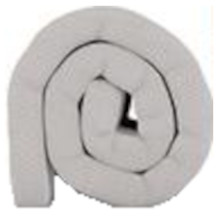
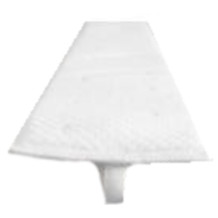
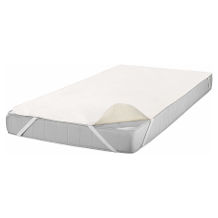
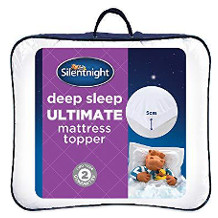
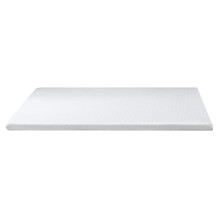
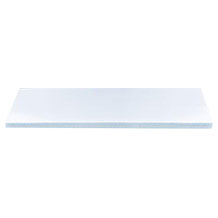
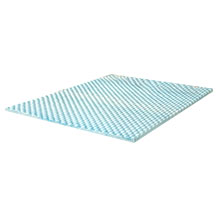
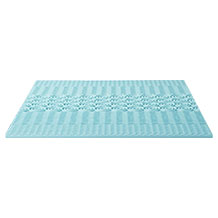
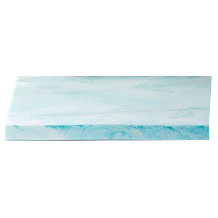
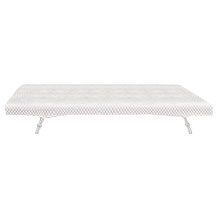
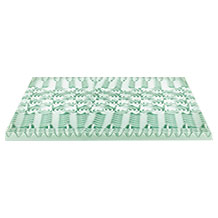
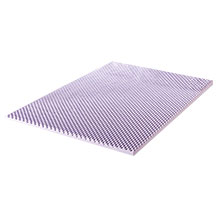

 99,036 reviews
99,036 reviews
